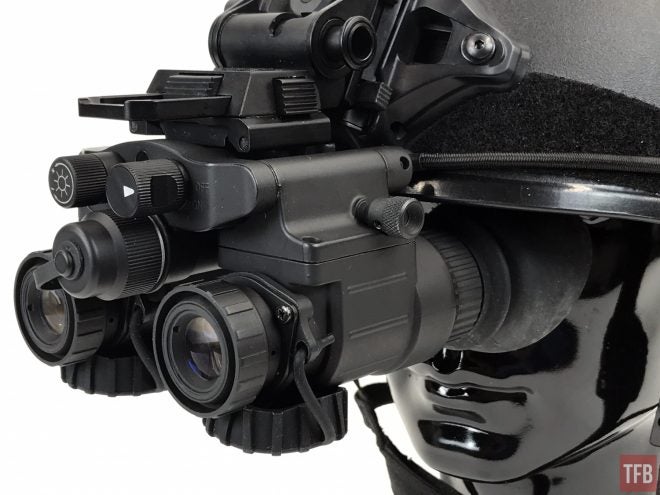A rather newcomer to the night vision industry, AGM Global Vision has a budget-friendly dual tube night vision goggle called the NVG-50. Actually, it looks a lot like the ARMASIGHT BNVD-51 which was brought under FLIR for a time. The NVG-50 is feature-packed and boasts a 50° FOV all for an affordable price of just around $1,000 for just the housing with glass. Sounds too good to be true. Let’s take a closer look at the NVG-50.
NVG-50 Or BNVD-51?
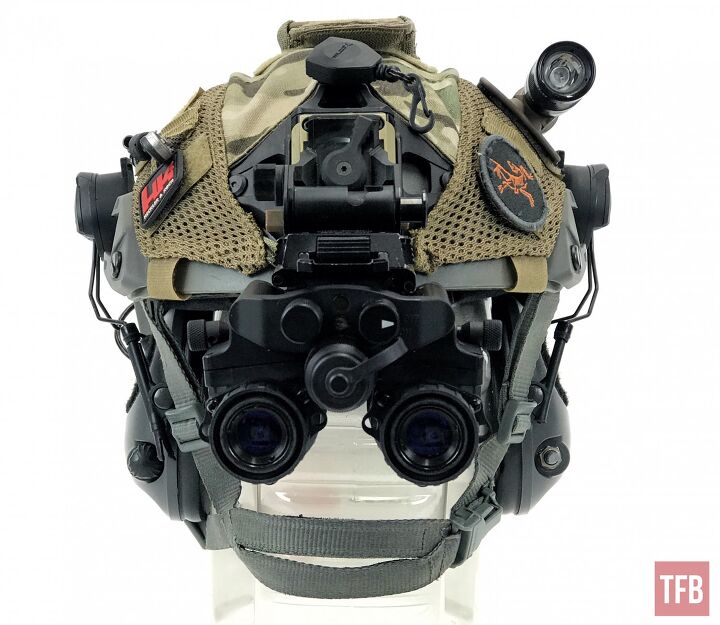
Last year I got a brief chance to look at a FLIR BNVD-51. If you recall, FLIR worked out a deal with SIG Sauer Academy and was providing their BNVD-51 to the training school. The BNVD-51 is pricey. I was told by FLIR they retail for $11,000! The BNVD-51 was feature-packed. It is an articulating bino housing. Each monocular pod swings up and out of the way like gull-wing doors.


And each pod automatically shuts off when you swing them up past 90°. However, they do not shut off when you flip the goggle up on the helmet. But as long as the monocular pods are swept back then the intensifier tubes are turned off.
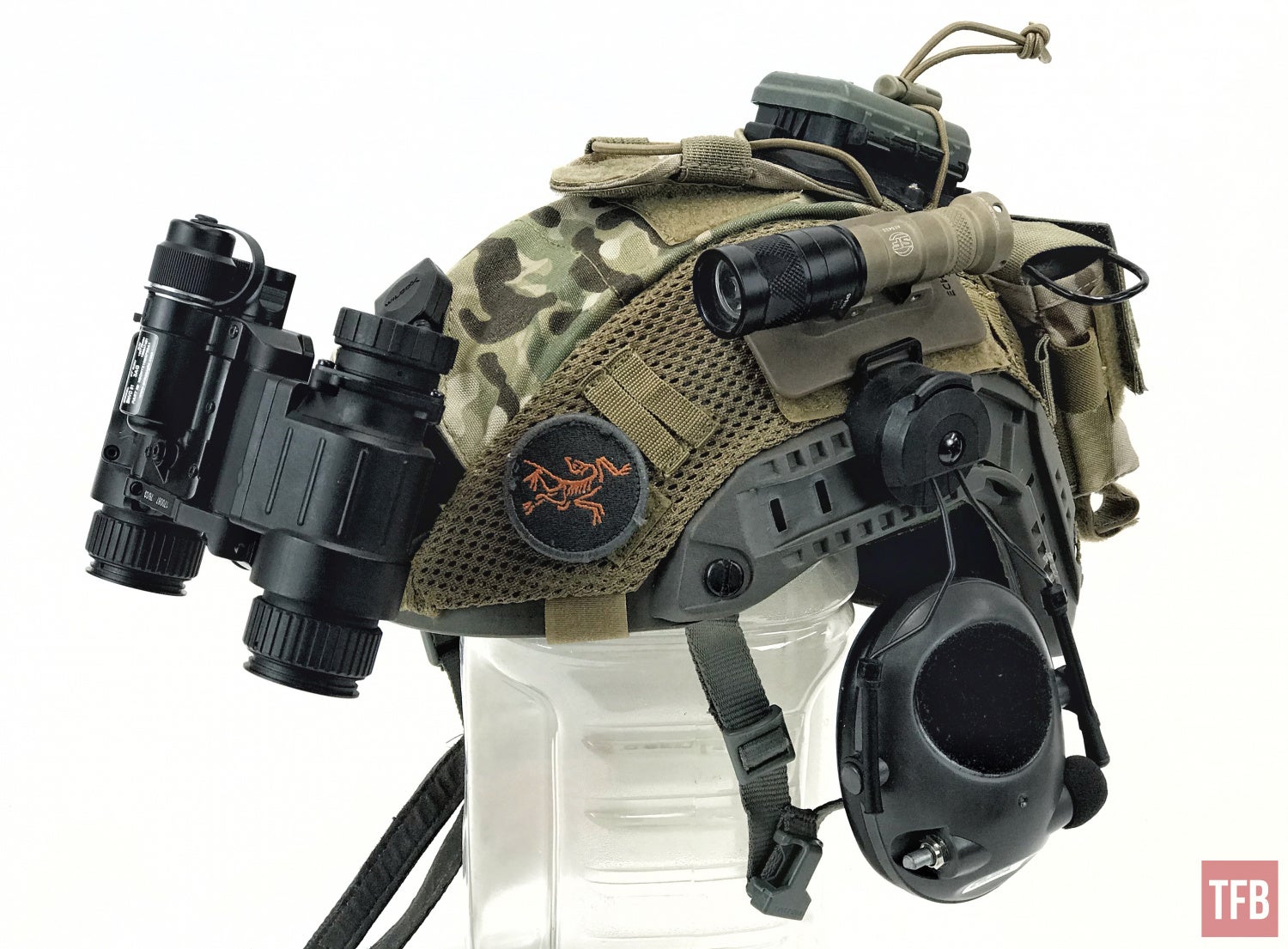

I’m here to talk about the NVG-50 so why did I bring up the BNVD-51? Because they are the same housing. In fact, it is known that AGM were former Armasight employees.
And now here are pictures of the AGM NVG-50 housing.
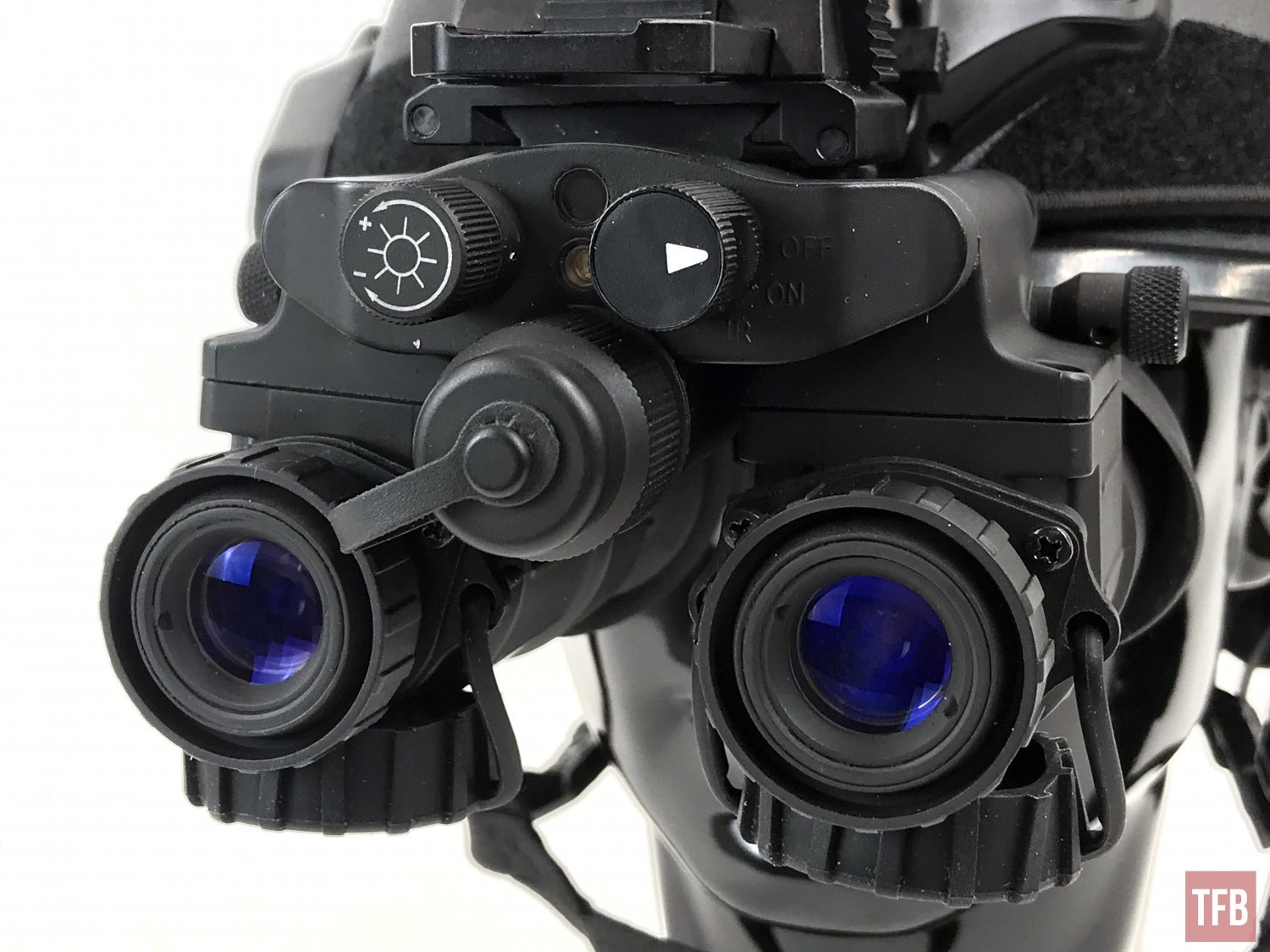
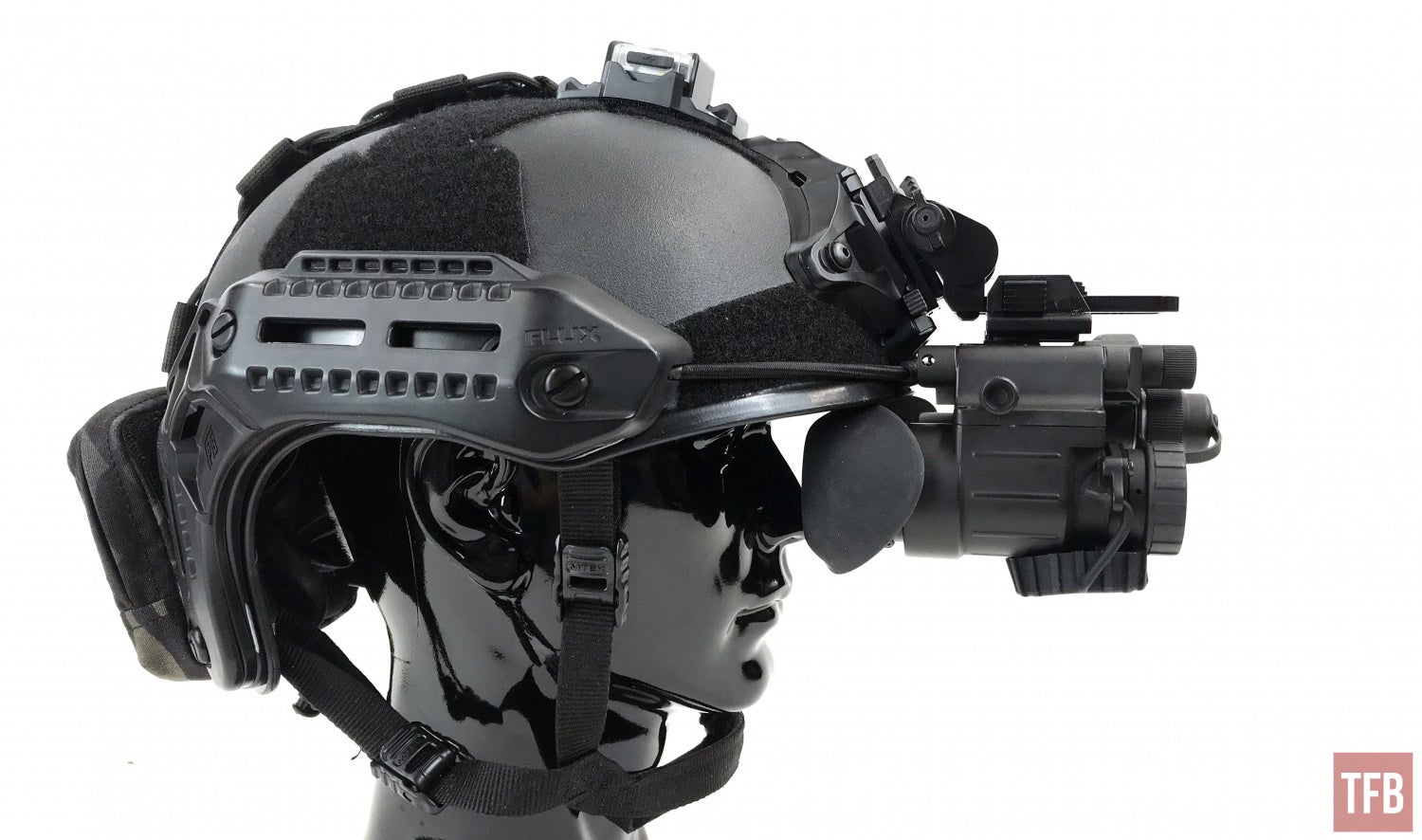


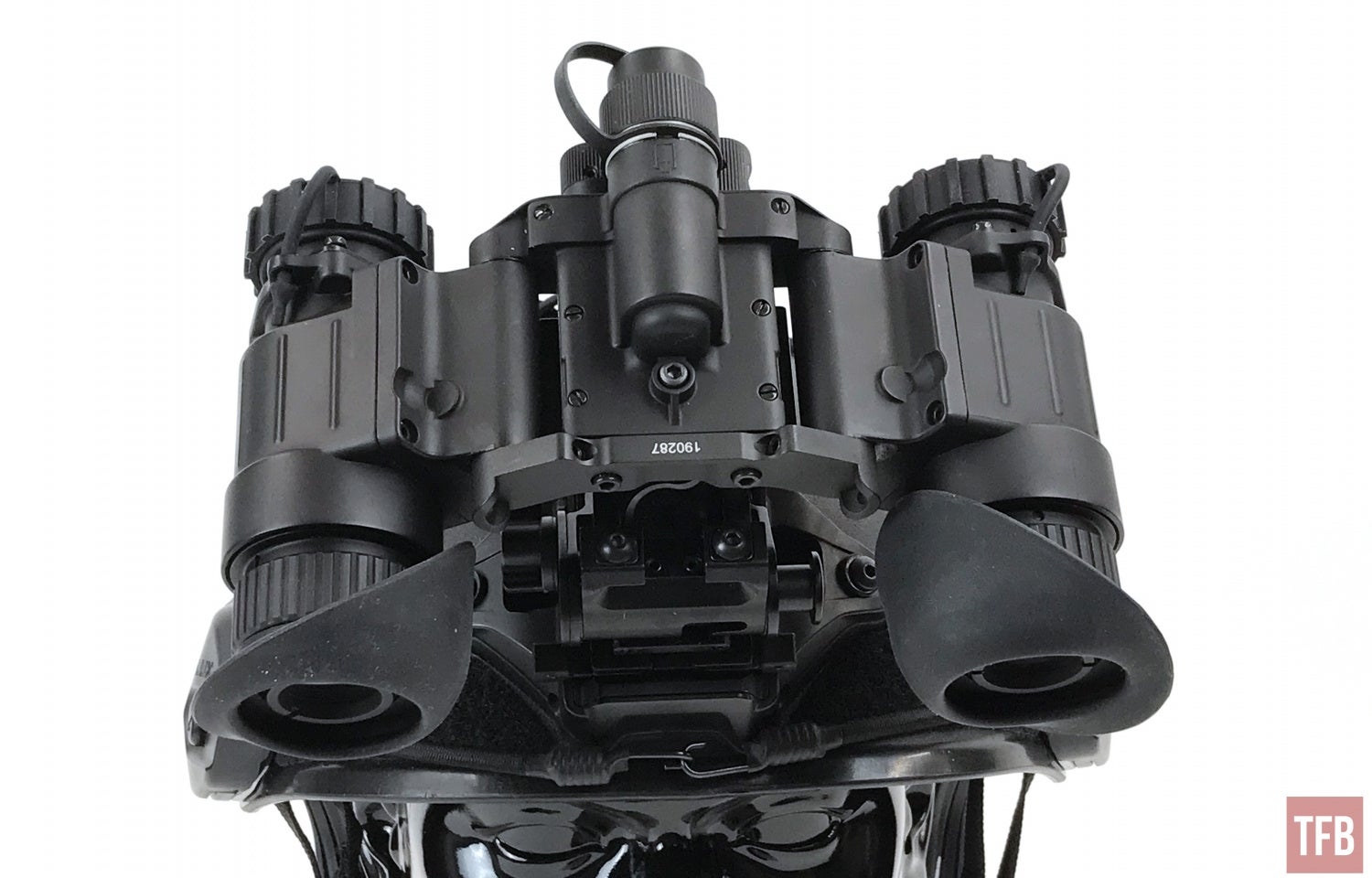
NVG-50 Feature Packed
Since the NVG-50 is the same housing as the BNVD-51 they have all the same features. In fact, FLIR never sent a proper manual with their goggle. In the AGM manual, I discovered some interesting features and accessories that I did not know when I had the BNVD-51.
The NVG-50, as well as the BNVD-51, is a dual fuel goggle. You can use AA or CR123 batteries. That is amazing. That means the goggle can handle 1.3v-3v and properly regulate the power safely to the two intensifier tubes.
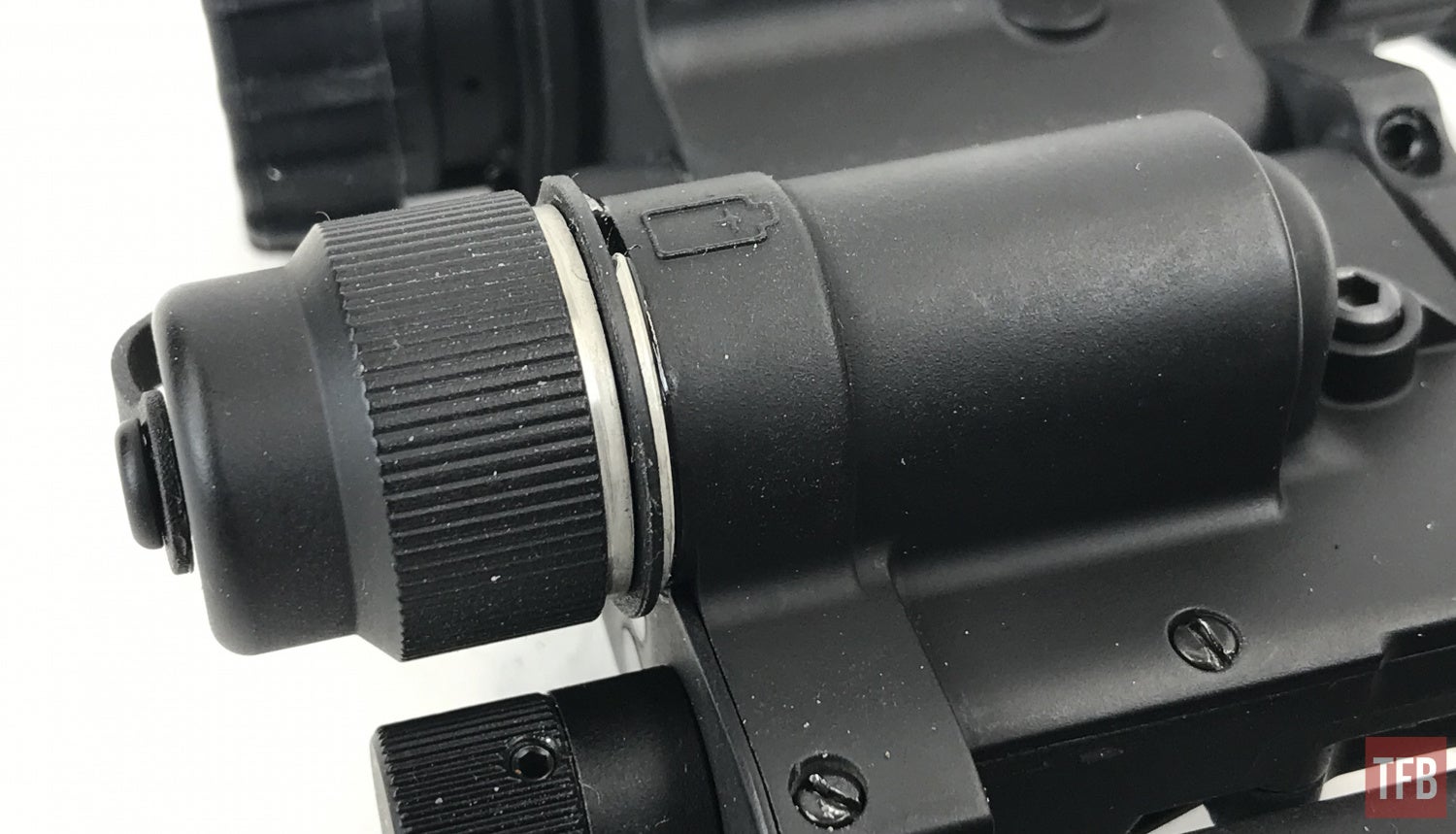
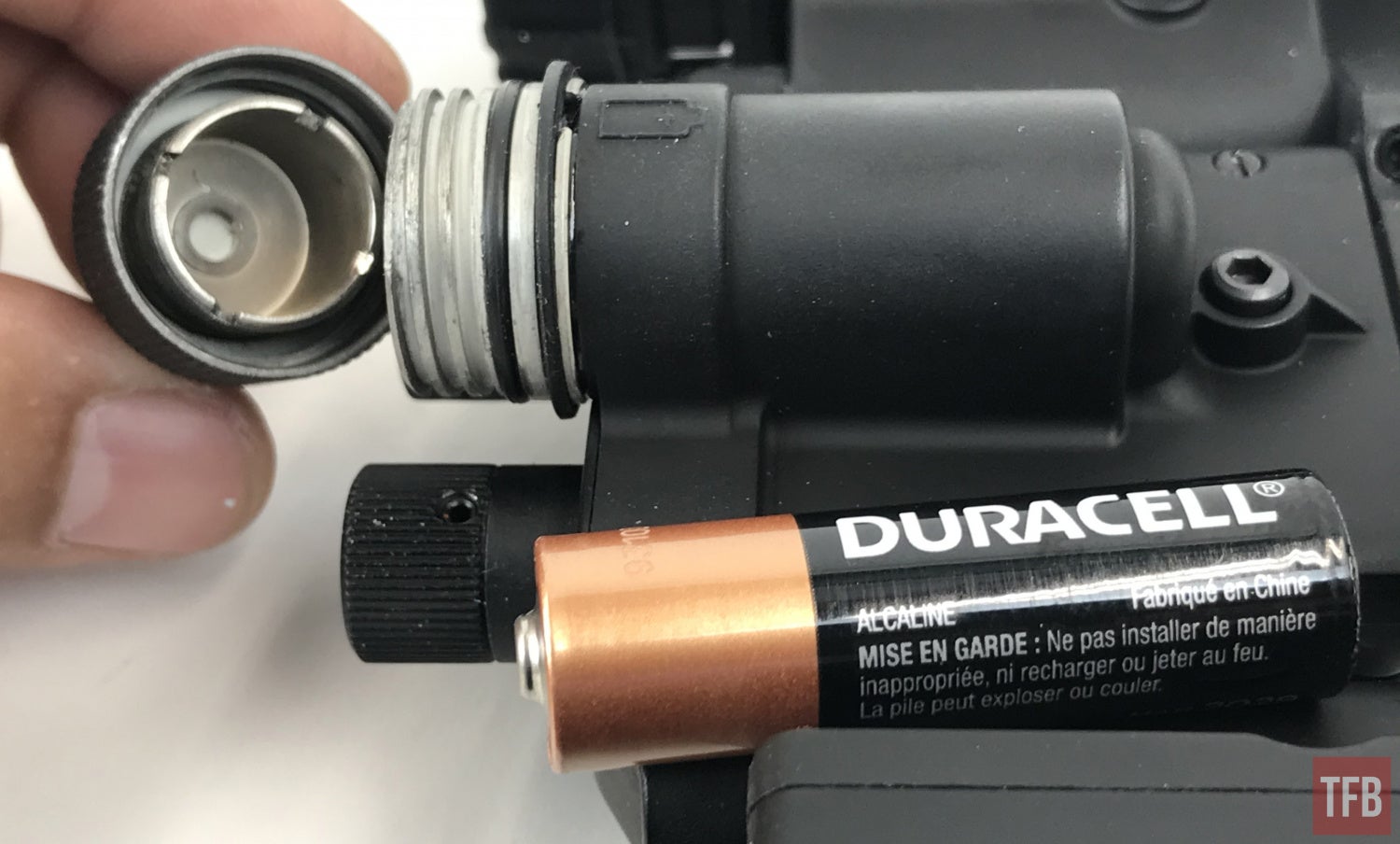
To switch from AA to CR123, there is a spacer in the battery cap. It is like a threaded cup. Unscrew the cup and flip it around 180° and screw it back in. Now the cup is a spacer to take up the space for the shorter CR123.

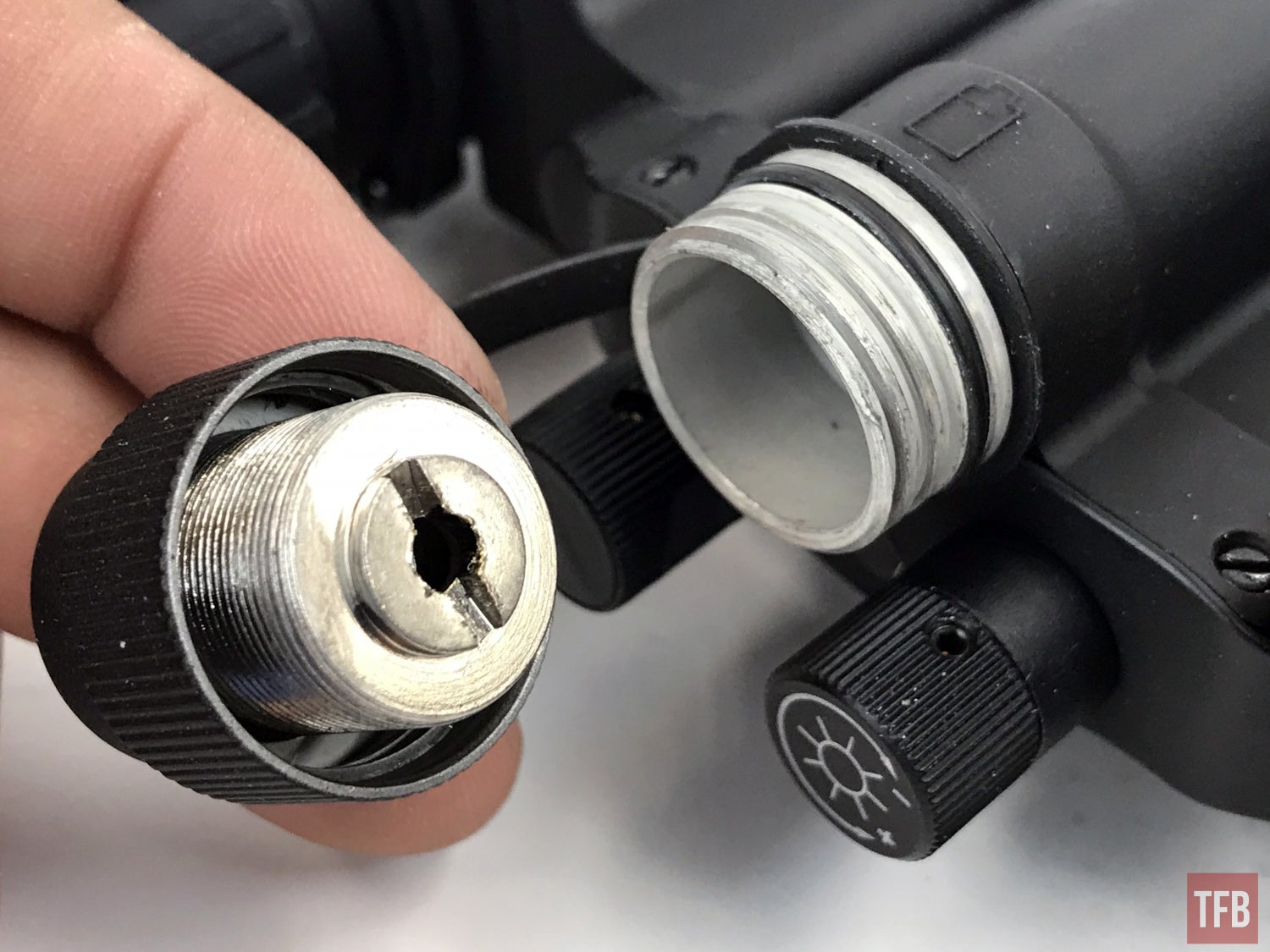
Aside from dual fuel, the NVG-50 can use both 11769 or 10130 image intensifier tubes. It has manual gain. Something many binocular housings lack. Some of the most prominent and popular bino NVGs like the Sentinel, ANVIS9, PVS-15, RNVG, and DTNVG do not have the ability to adjust the gain. Only the PVS-14 housing can accommodate the pigtail off the 11769 tube. Where a potentiometer adjusts power to the pigtail to control the gain of the tube.
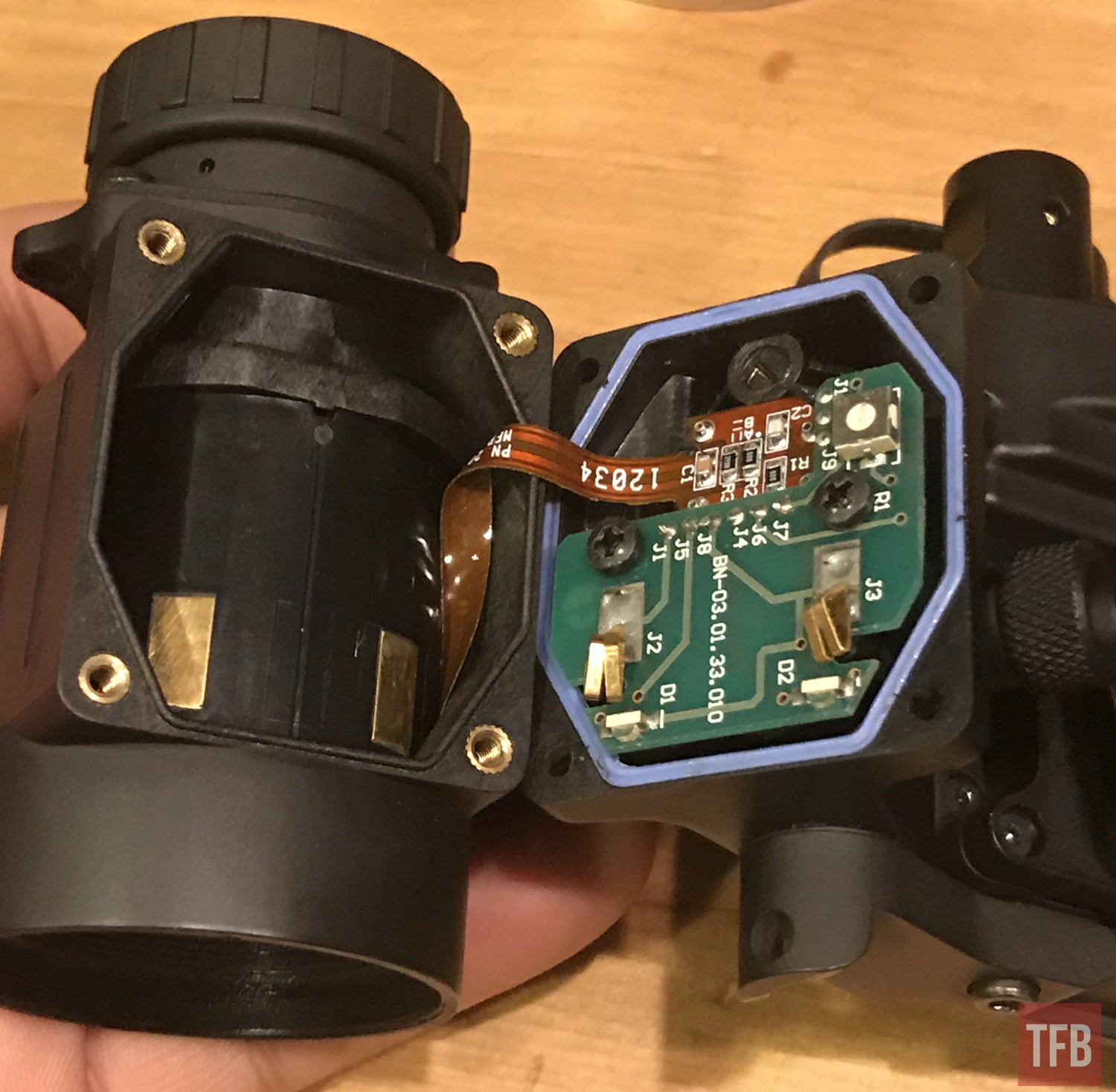
11769 pigtail running into the bridge for manual gain control.
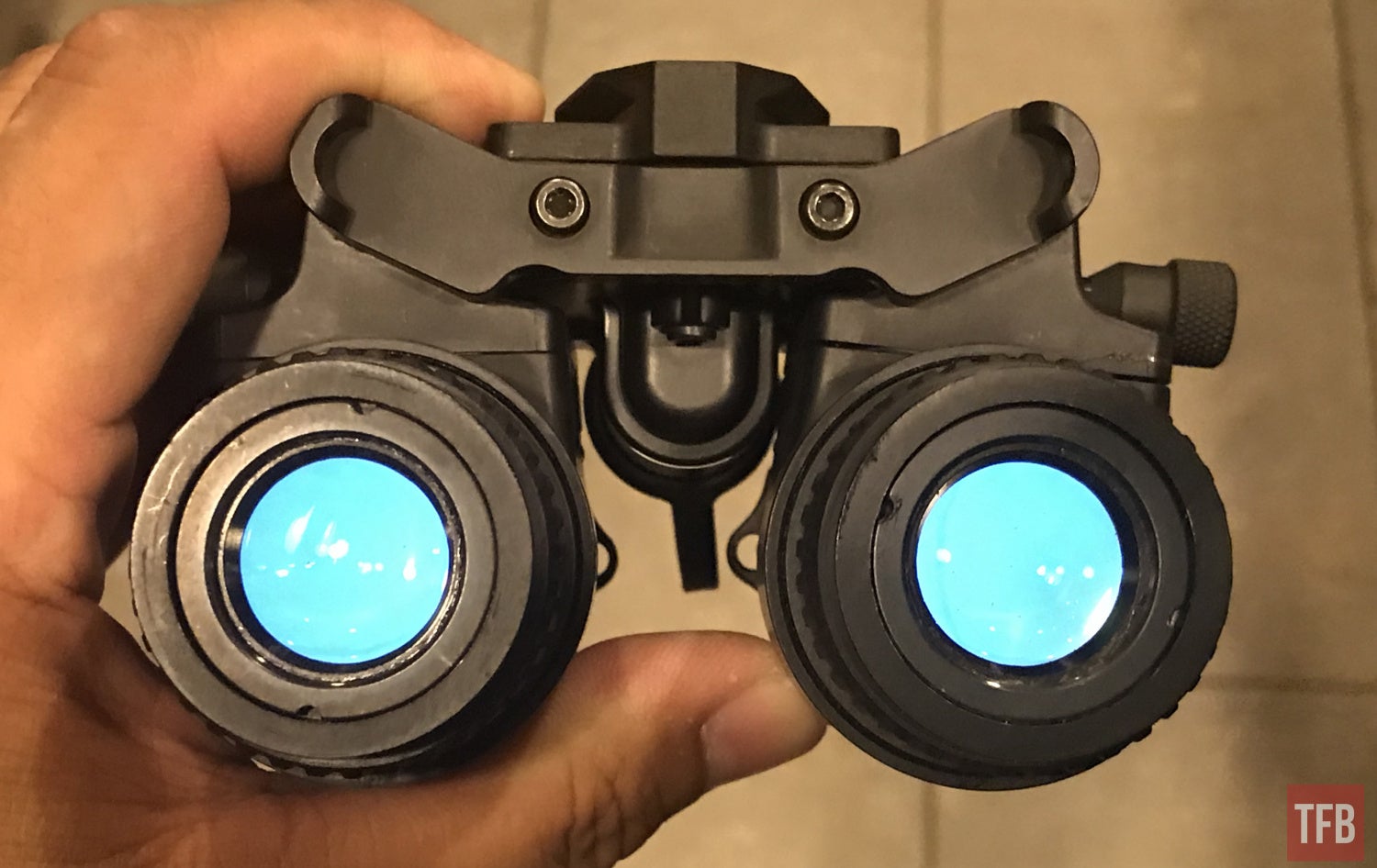
See the knob on the side just above the rear lens? That is the pupillary stop. You adjust that knob so the monocular pod is centered in each corresponding eye’s FOV. This way when you roll the pods up and bring them back down they will stop where you set them. No need to readjust like the DTNVG.
50° FOV
Aside from articulation, the NVG-50 has 50° FOV lenses. Regular night vision, like the PVS-14, only sees 40° FOV. Take a look at the two photos below. The first one is looking through the NVG-50 while the second photo is looking through a Sentinel with PVS-14 optics.
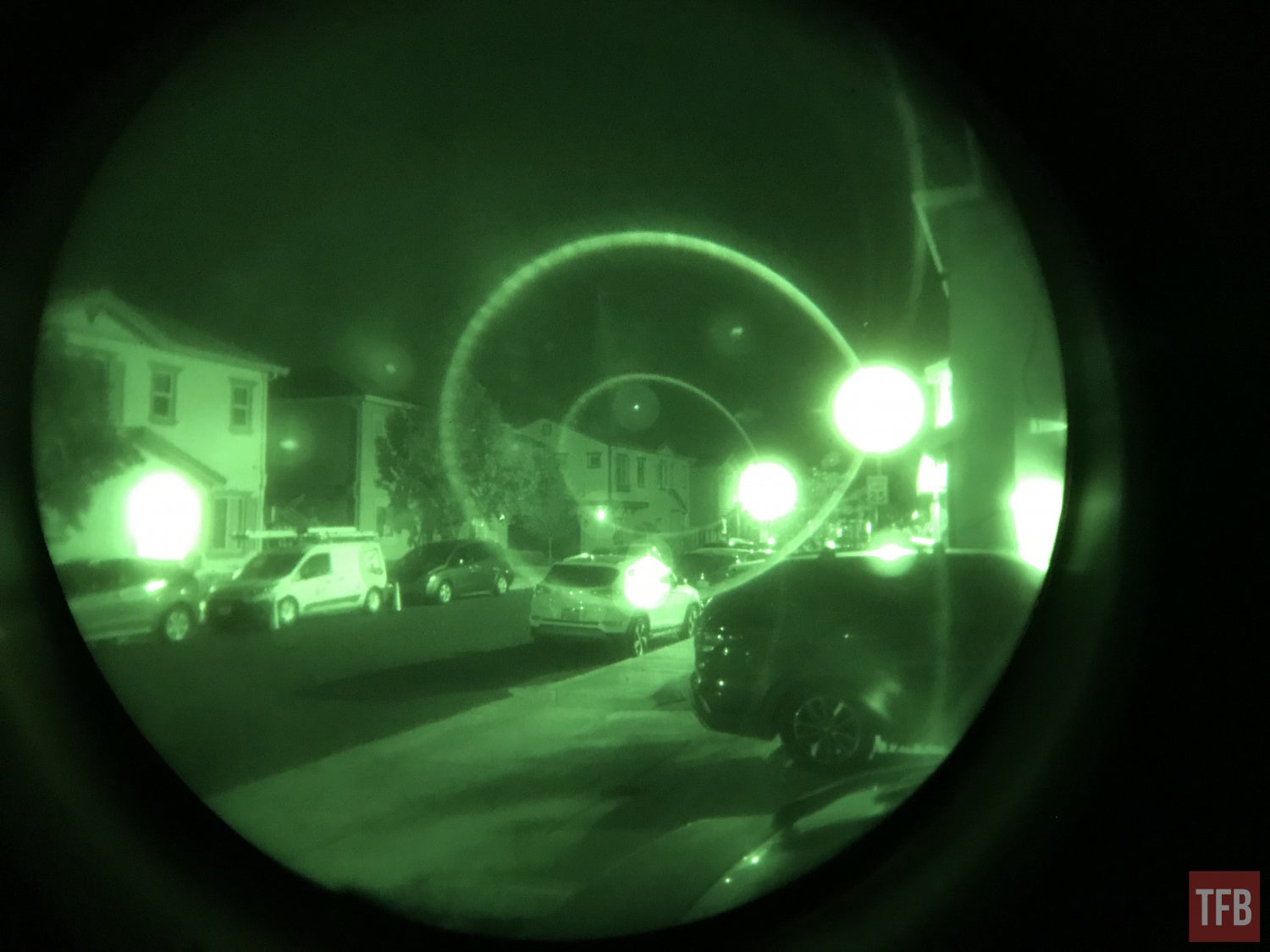
NVG-50 POV
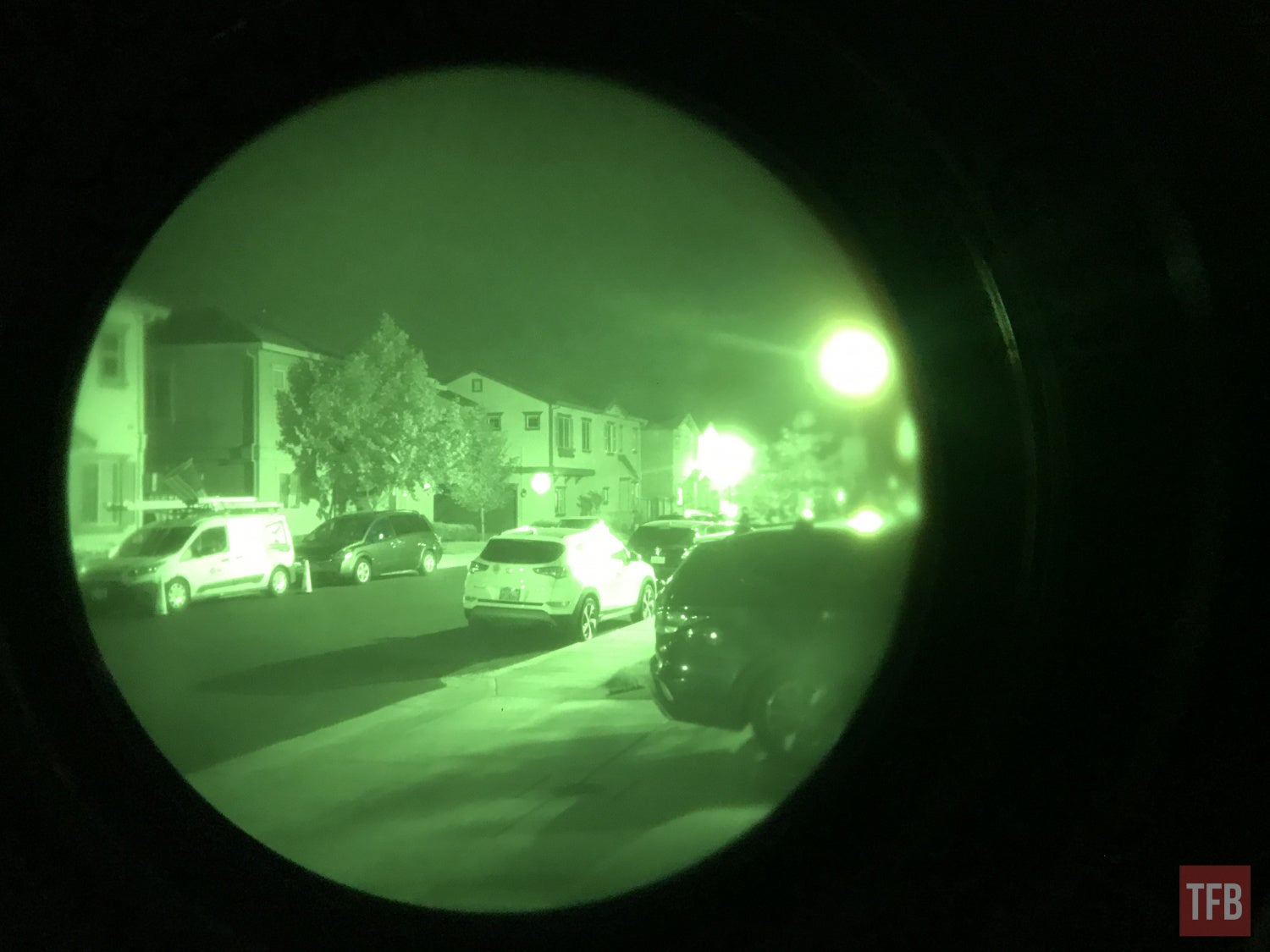
Sentinel with PVS-14 glass 40° FOV
Look at the left side of each image. An entire car is cut off in the 40° FOV. Even though the 50° FOV does see more, it is not necessarily better. For some optical science reason, the 50° lenses create a strange lasso like looping lens flare. You can see it in the photo above. You do not have that issue with the PVS-14 style glass. In fact, I have not seen that in PVS-15 or ANVIS lenses either. While I have only had a brief look through ANVIS-10 and PVS-31, they too do not have lens flare issues.
While I can overlook the lasso lens flare, the biggest issue I have is that the lenses are proprietary. They are a matched pair. You have to use the front objective lens with the rear eyepiece. If you don’t, you will get massive distortions. The 50° eyepiece is basically a form of a fisheye lens. The rear eyepiece corrects the distortion although some people have claimed they see some fisheye distortion in the outer edges of the image.
I did an experiment and simply held the objective lens and eyepiece to mix and match the lenses. It did not work. But I was able to photograph the FOV without the image intensifier in between the lenses.
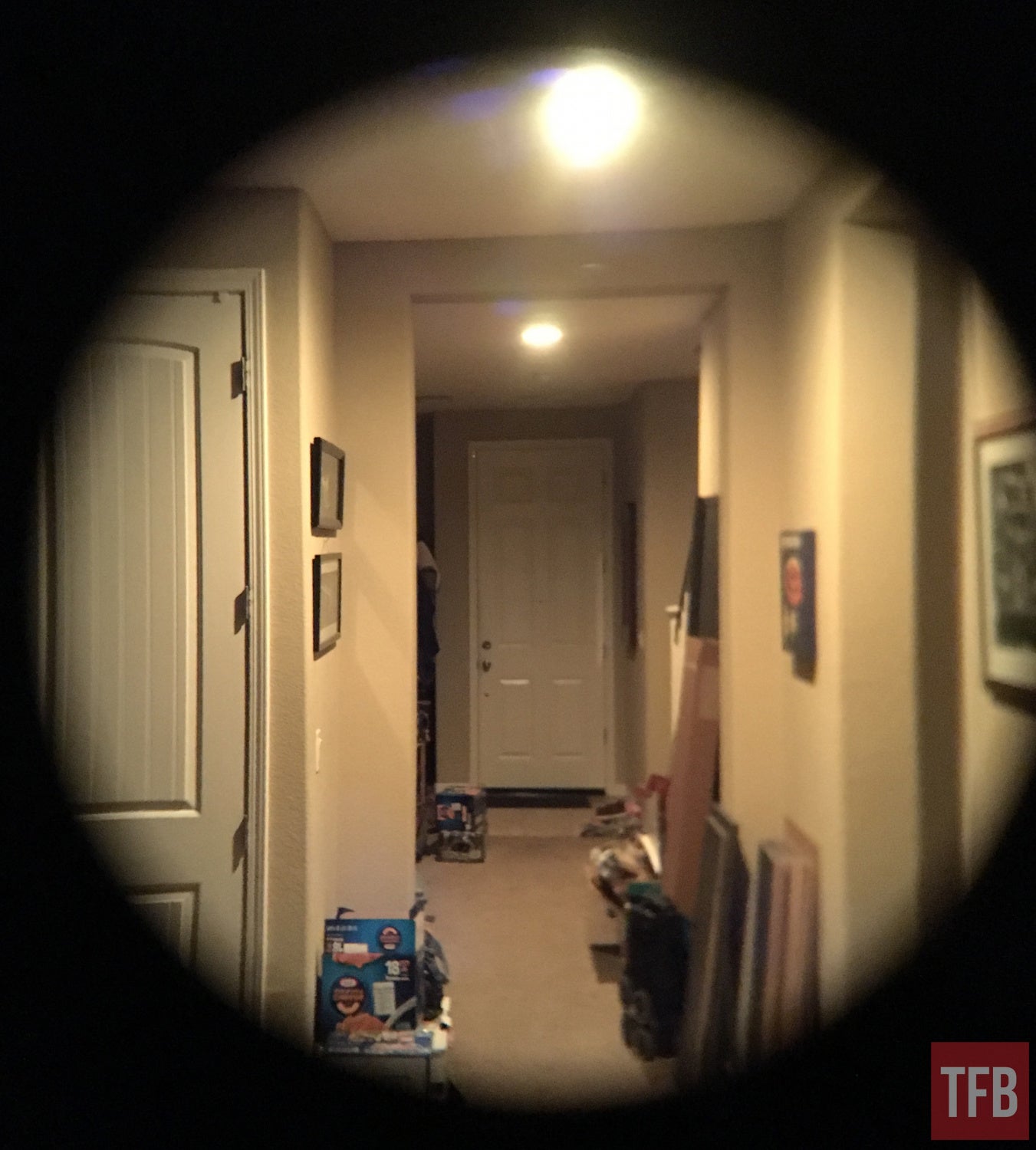
50° FOV lenses
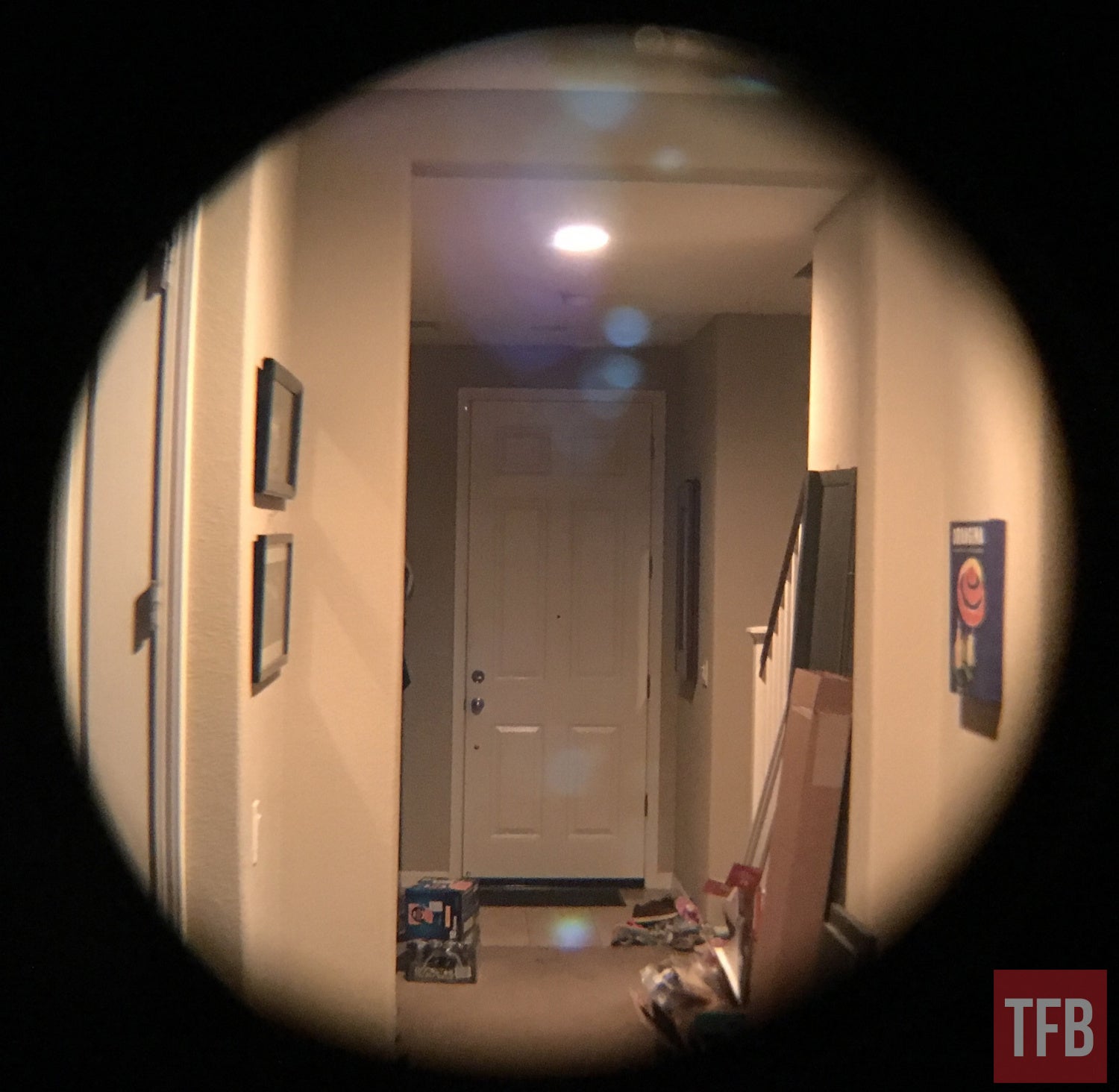
40° FOV lenses
Small Diameter Lenses, Bigger Is Better
The NVG-50 lenses are tiny compared to PVS-14 glass. This causes a couple of problems. While the objective lens is smaller, I do not think there is much being sacrificed in terms of light gathering but the rear eyepiece is super tiny.
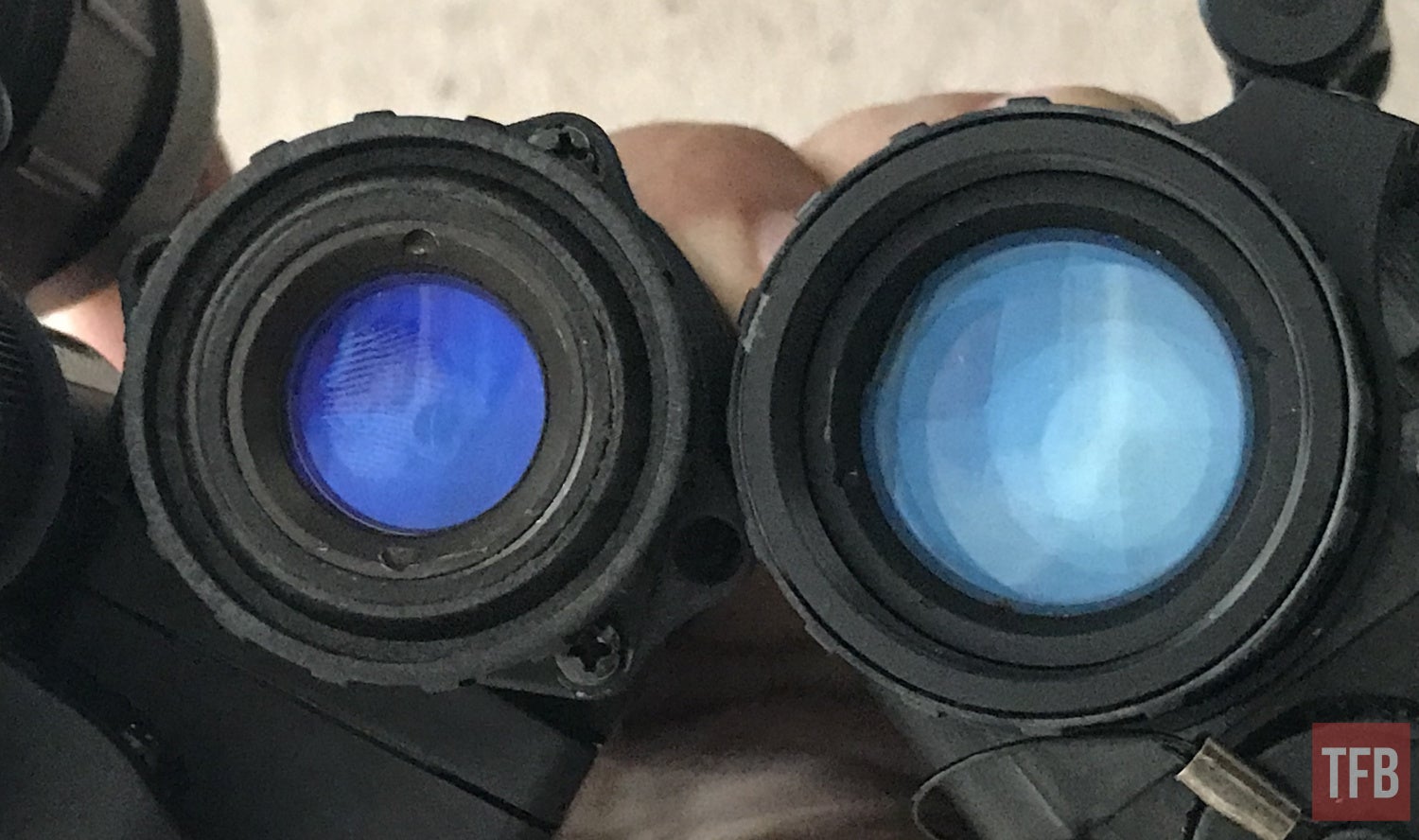
NVG-50 on the left, PVS-14 on the right.
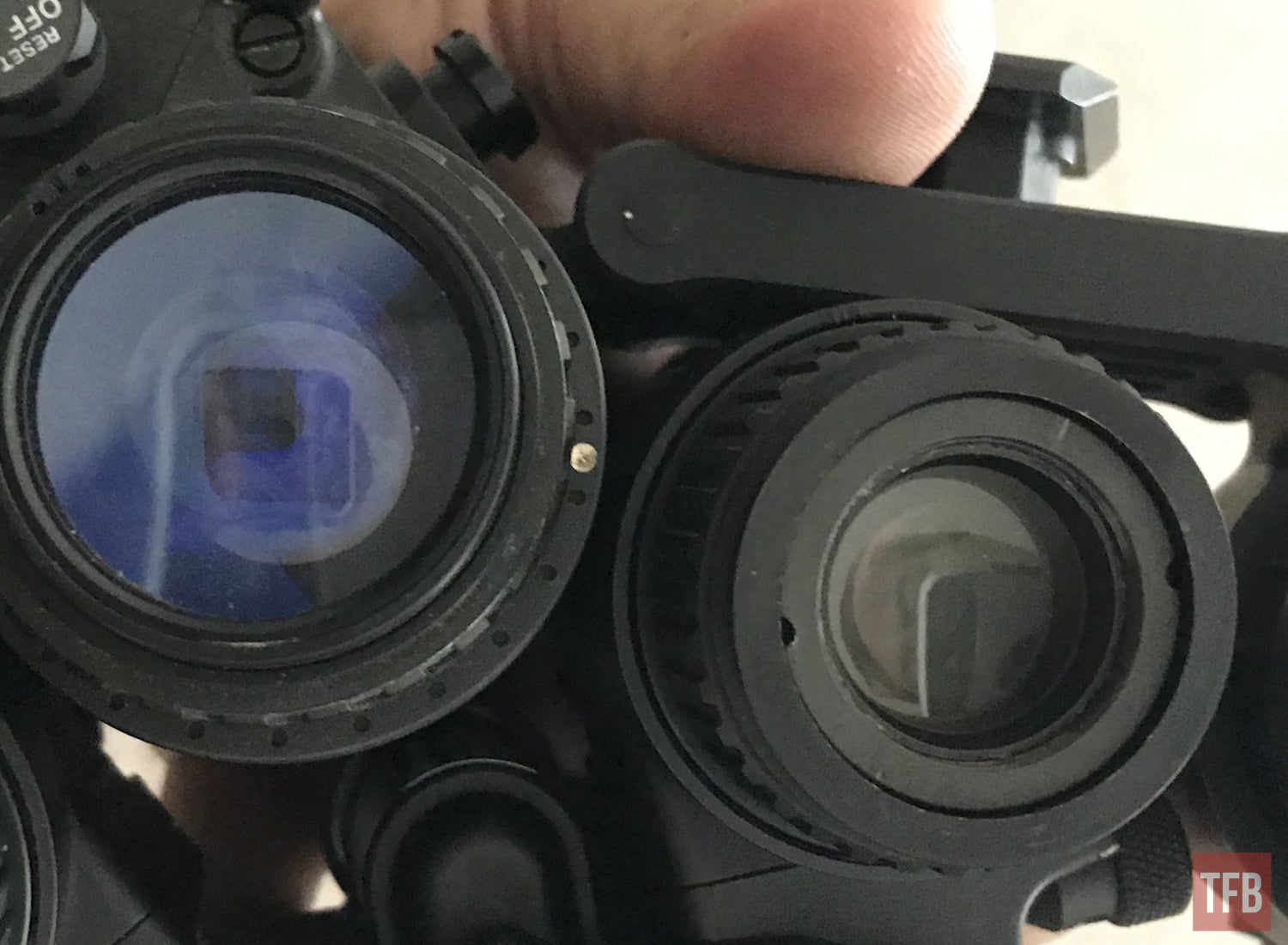
PVS-14 eyepiece on the left, NVG-50 on the right.
Here is a comparison with other night vision devices with tiny eyepieces.
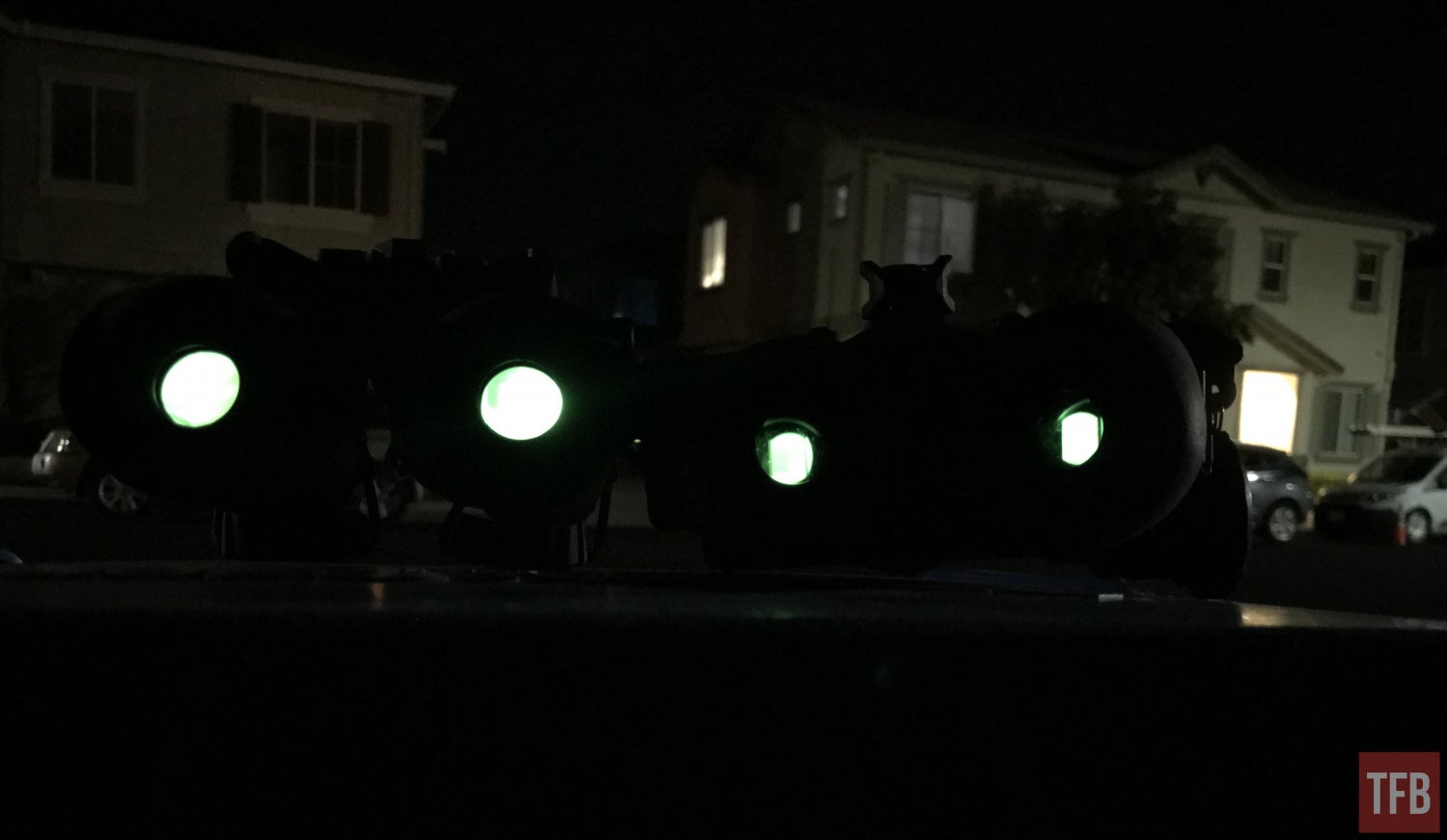
NVG-50 vs PVS-7
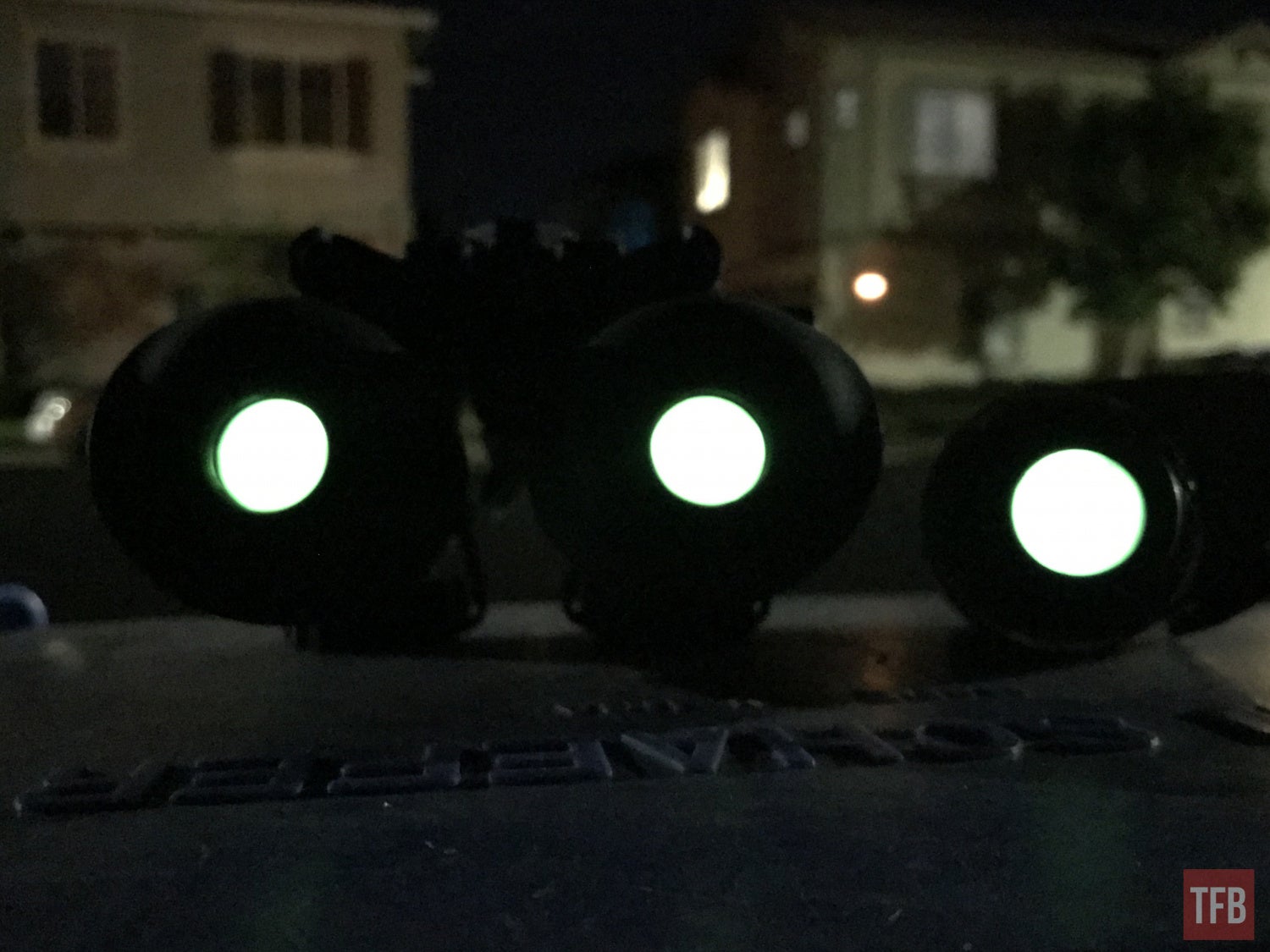
NVG-50 vs 18mm ANVIS eyepiece
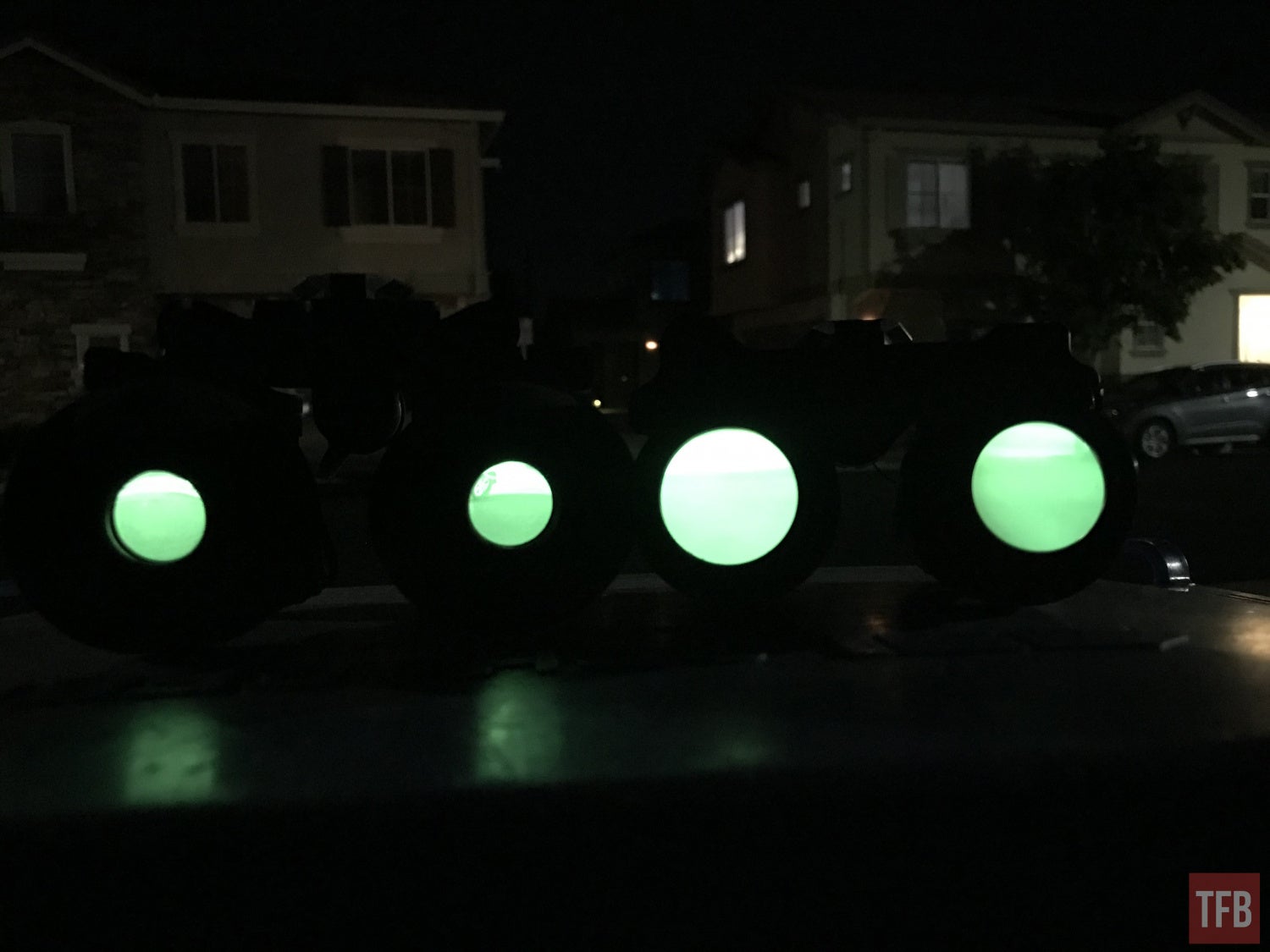
NVG-50 vs 25mm PVS-14 eyepiece
You can see a HUGE difference between the PVS-14 eyepiece and NVG-50 eyepiece. The aperture of the eyepiece is smaller on the NVG-50 which means you have to wear the NVG-50 closer to your eyes than the PVS-14 eyepiece. If you wear thick eye protection then the eyepiece can start to restrict the image you see prematurely. Whereas the PVS-14 25mm eyepiece is more forgiving and you can push the goggles further away from your face without compromising the image.
A small issue is the placement of the onboard infrared illuminator. It is in the middle of the bridge wedged between the gain control knob and power knob. This causes “barrel shadow”.

See the two semicircular shadows on either side of the image? That is the shadow being cast off the power and gain knobs.

Other Concerns
The NVG-50 weighs 23.4 ounces. That is heavier than all the other common dual-tube housings.
When I had the FLIR BNVD-51 the housing was cracked.

Final Thoughts
The AGM NVG-50 housing is a great bargain. Initial prices were just around $1,000 for the complete goggle kit. Typically a dual tube night vision housing is around $1,500 and that does not include the glass. So you have to buy two objective lenses and two rear eyepieces to complete said goggle and that could easily take another $900 so now your goggle cost you $2,400 and you have not even put the image intensifier tubes inside yet.
Like most products, low-cost budget items do have their drawbacks. We see that in the extremely narrow rear eyepieces. You will have to wear the NVG-50 a lot closer to your face and you will see less in your peripheral view. And while the 50° FOV seems attractive, it is not that much of benefit. Someone with 40° FOV lenses can simply scan their immediate surroundings more to compensate and they will not have lens flare issues like the 50° lenses.
The weight is a little more than other goggles but I am concerned about the robustness of the housing. It feels like some Russian made device and not the lightweight glass filled polymer styling of US-made night vision. It is rumored that the NVG-50 housings are made in Ukraine.
While there are some concerns regarding the NVG-50, none of them are deal breakers. If you are on a budget and want to get into dual tube, the NVG-50 is not bad for the price. Just know that it is not better than what is out there but it is cheaper.
 Your Privacy Choices
Your Privacy Choices
